updated 10.21.2019
updated 10.21.2019
The pastoral estate of Dunlop is situated nearby today's village of Dunlop in the Cunningham district of Ayrshire, about 30 miles southwest of Glasgow, Scotland. After Scottish King Malcolm annexed the Kingdom of Strathclyde, he started the feudalization of the entire area.
His successor, King David, granted Cunninghame to a de Morville, who was appointed Hereditary Constable and built a castle at Kilmaurs. His vassal, Dom Godfrey De Ross, was then given the Fortress on Dunlop Hill. He called the site Boarland and also Overhill. There are no traces of the original castle on the Hill today, although the remains of a wide ditch can be seen on the southern face. The original castle on the Hill bore traces of the fortifications added another De Ross who had sided with the Balliol faction against Bruce in the early 14th Century contest for the Scottish Crown. Subsequently, De Ross had to forfeit his lands. Those De Ross's were the last inhabitants on the Hill.
The hereditary Celtic Chief of Dunlop Hill, being appointed the Huntsman for the
Norman De Ross, was given land (circa 1066) to build a large manor house on the
banks of the Clerkland Burn. Dunlop House (the fourth in a series) now stands on
this site. The main branch of the Dunlop Family resided at this Clerkland
estate, called Hunthall.
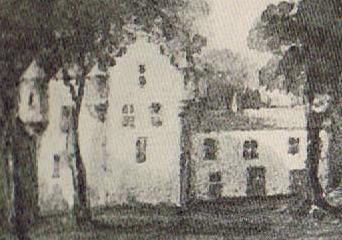 (right)
(right)
Pont says, "Dunlop, one ancient stronghouse, fortified with a deep boat of water, and planted with goodly orchards. It is named Hunthall because, say they, the ancient bounds and grounds thereabout, and all Macharnoch Moore, as of olde, a mighty forest." The castle or stronghouse of Dunlop stood on the banks of a little rivulet called Clerkland burn, which divided the parish from Stewartstown. It is unknown at what time the original square tower was erected. One of the more modern additions bore the date 1599. The site is now occupied by the handsome modern mansion, (see above) built by the late Sir John Dunlop, Baronet, in 1835.
The Chief (Dunlop of Dunlop) had built his manor in 1066 on the banks of the
Clerkland, on land given him by De Ross. With the departure of The de Ross's in
the 14th Century, the Dunlops became the Family of most consequence in the area.
This Manor was the first of four buildings built there as the
House of the Family Dunlop. This estate was then owned and occupied by the
family over 598 years. The second House was finished circa 1304, and the third
started in 1599. The above and current Dunlop House was built in 1834.
The 1599 site was just next to the present building, but the stables and storehouse were built on the hill just across the Clerkland Burn. There are ruins still there in 2002 (above). This view is from the hill ruins down towards the site of the 1599 and 1834 Houses.
When I recently acquired the book "Robert Burns and Mrs Dunlop, Volume One" by William Wallace, published by Dodd, Mead and Company , NY, 1898, I was reviewing the contents and was tremendously delighted to find a glossy page with a painting of Dunlop House as it was in the time of Frances Wallace, at the time that Robert Burns visited there! This is the third incarnation of the House, the one that bore the original 1599 inscription one sees above! Parts of the original two may be displayed also, since the 1599 addition was merely that. According to the author's preface, the information regarding Dunlop House came directly from Major Dalrymple Hay, who owned Dunlop House when this book was published in 1898. For your enjoyment, here it is: The description reads: " the old residence included a square tower of unknown antiquity (11th century). with additions built at various periods, one of the more modern portions bearing the date 1599. It was partially fortified in the spirit of ancient times, but was nevertheless possessed of great accommodation and contained several elegant apartments. A sketch of it, made in 1830, by Mrs Dunlop's granddaughter, Frances Dunlop, afterwards the wife of Alexander E. Monteith, Esq., Sheriff of Fifeshire, has been preserved, and, by the courtesy of J.A. Gemmill, Esq., Ottowa, Canada, appears in this work. Dunlop House was pleasantly situated in the centre of gently undulating "policies", on the bank of the little rivulet called Clerkland Burn, a mile from the village of Dunlop, and about three miles from Stewarton, which was the post town in Mrs. Dunlop's days, and where Burns paid occasional visits to his unfortunate "Uncle Robert."-"- Mike Dunlap
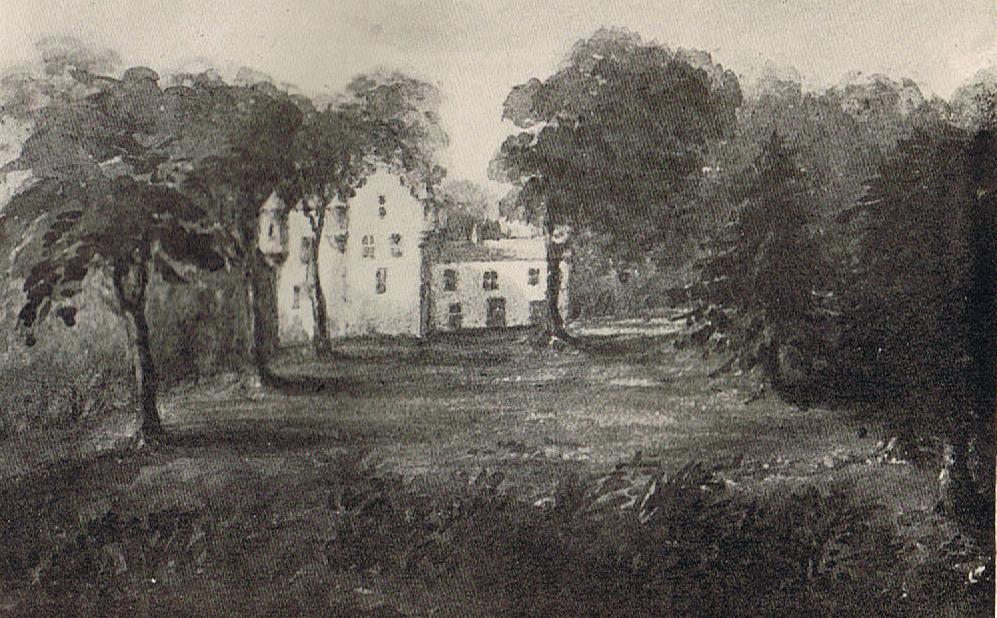
The current main building was constructed between 1831 and 1834 to the designs of David Hamilton for Sir James Dunlop. The house was built in the Scottish-Jacobean style with very detailed gables, dormers, etc and boasts a very dramatic and asymmetrical front elevation, "laced with strapwork". This style was individualistic and makes the current Dunlop House truly unique in architecture. Dunlop House is an essay in the Jacobean manner and was one of its Hamilton's favorites. The design began as an addition to an older house, but eventually the latter was almost completely demolished. Dating from 1833-34, the house is set in the midst of attractive landscaped parkland.
The following is from a current real estate brochure:" The present tall and stately building of free stone dates from 1834 and was designed by the Glasgow architect Hamilton. It is built on the site of a very much older structure however dating from 1599 - "an ancient stronghouse fortified by a deep moat". It was Sir John Dunlop who demolished this former structure and built the present imposing mansion employing Italian craftsmen to carry out the beautifully coffered ceiling in the drawing room. The stately property still retains many of the original cornice and ceiling details and incorporates a Jacobean tower. The interior of this fine property includes two halls, the lower or entrance hall and an upper hall with tall Corinthian pillars from which the principa lrooms diverge. The centre of the house is lit from the room. Dunlop House was among the first Ayrshire houses offered to the Red Cross during the War, and latterly has been utilized as a 60 bed long-stay hospital. A recently constructed Recreation Centre includes a swimming/therapy pool, gymnasium/games hall and changing accommodations.
Ground Floor - Kitchen, Dining rooms,
Laundry, Bathroom and Offices = 3,400 sq. ft.
1st. Floor - Bedrooms, Dormitories, Bathroom, Recreation/Day Room = 4,000 sq.
ft.
2nd. Floor - Bedroom, Dormitories, Day Rooms, Bathrooms = 3,500 sq. ft.
Attic - Bedrooms, Store Rooms = 1,320 sq. ft.
Total 12,220 sq. ft.
Recreation Building
Main Hall 1,647 sq. ft.
Pool Area 1.226 sq.ft.
Hunthall Farmhouse The attractive former 2
story stone farmhouse comprises 5 apartments, kitchen and bathroom. It is
currently privately owned and separate from the main property.
Lodge House - Comprises 3 apartments, kitchen and bathroom, all set within
extensive grounds. This is also currently owned by a private party.
This historical mansion is located on the southern fringe of the Ayrshire
village of Dunlop within a predominantly rural setting.
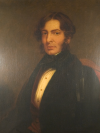
The Interior had been changed to offices on the ground floor by the just previous owners, RFI, INC, but the first floor reception rooms still show the splendor of days past. Mike and Lynda Dunlap stayed at Dunlop House (first Dunlops to do so since the early 1900's)in April 2000 as guests of RFI, Inc. and as representatives of the Dunlop Family. This was due to the efforts of Joe Dunlap during our investigation of possibly acquiring the property. A video of the interior and blueprints of the Manor were acquired for posterity. Unfortunately we had not the funds nor capability of acquiring the House.
The Dunlop House is currently (2009) being carefully refurbished, having been purchased by a developer interested in creating four condo apartments to be sold individually. The costs of these condos are to be $400,000-$1,000,000 and higher.
The House is now declared a Class A Historical Site through the efforts of Hugh Hamilton of Dunlop. Plans communicated to the author entail a return to the original splendor of the three-story Atrium and Staircase. Construction is held up due to the conservation efforts.. Access to the House is impossible (2004), with the drive being fenced and the lower windows boarded.
Here is a letter from Guy Dunlop who was there in 2005:
"I
also continue to closely follow the development of Dunlop House and the
estate, both with great sadness (as the contiguous integrity of the great
house and its estate will forever become divided) but also as a likely
purchaser and my desire to see the house saved (and restored, such as it may
be). My communications with various architectural societies in Scotland have
revealed that the fabric of the house is in very urgent need of restoration,
such that if it is not done soon, the house may be lost. Indeed, I visited
the house in June 2005 following learning of its fate and my correspondence
with conservation agencies and I was alarmed to see its condition. I last saw
the house (and took a tour of its interior (of which I have photographs)) in
January 1993 and it is now in a very sorry state. The historical societies
support the development of a housing estate (and turning the house into flats)
as there is, as they see it, no other viable prospect for the urgent
restoration of the house. However, planning permissions continue to be
difficult and my latest enquiries show that they have still not been granted.
The developers do appear to be struggling in this respect. It is correct, as
your website indicates, that the planning permissions will require restoration
of the stain glass windows and the main stair case. I understand also that
the design of the flats in the house will also materially maintain the
original proportions of the rooms in the house, but inevitably, one must
expect some loss of internal rooms and features. The development is also
important, I am led to believe, for East Ayrshire Council, as the rateable
value of the properties developed will be the highest in the county, which is
the poorest in Scotland."

Dunlop House update!
An e-mail arrived to Hugh NanKivell in February 2008 describing the impending development of Dunlop House and the surrounding property:
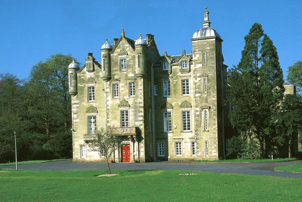 "This
is a very prestigious property for Laurel Homes (McTaggart Construction ) to be
involved in, and as the building is A listed any development will be sensitive
to the mansion�s long tradition. My position with the company is the sales &
marketing manager and I am directly involved with arranging the release of the
properties for sale to the public.
"This
is a very prestigious property for Laurel Homes (McTaggart Construction ) to be
involved in, and as the building is A listed any development will be sensitive
to the mansion�s long tradition. My position with the company is the sales &
marketing manager and I am directly involved with arranging the release of the
properties for sale to the public.
I am currently working on the brochure and I would like to give all nine apartments a marketing name that would be associated with the history of the mansion, we are also building 17 villas in the grounds, there are 4 different house styles here for which I also require marketing names. I would welcome any suggestions from any members of the Dunlop Family. I plan to open a sales & Marketing suite in one of the out buildings, I hope to open this in Autumn this year and release the first properties for sale to the public. I plan to open a 3 bedroom show apartment in the mansion and a five bedroom villa in the grounds around December this year. If you know of anyone who is interested in the properties you can pass on my email address to them and I will send them details when available. I would also like to arrange by an open day in August where people who have registered interest can come along to the opening of the marketing suite and view the plans, so it would be lovely to meet any descendants of the Dunlop family at this. Thank you once again for your information regarding your connection with the Dunlop family and I will be in touch as soon as I have further information."
Yours sincerely
Anne Gardiner
Sales & Marketing Manager
Laurel Homes
01294832195
02/26/16 UPDATE ON DUNLOP HOUSE
Construction is finsished on the updates to Dunlop House. All condos have been partitioned and built out and are ready for sale!
DUNLOP HOUSE LIVES!!!
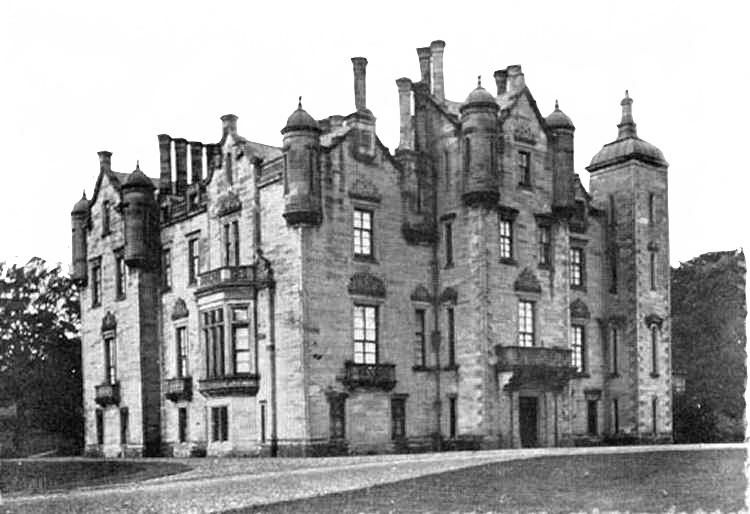
see Martin Galloway's Dunlop House article from ScotlandOne
Lands of Dunlop from wikipedia
